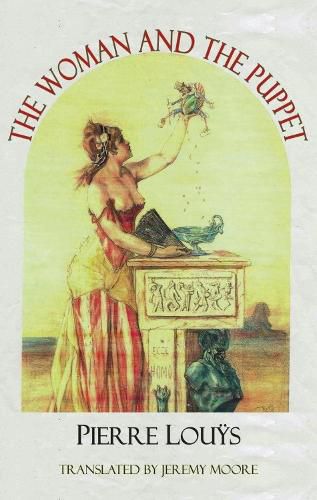Readings Newsletter
Become a Readings Member to make your shopping experience even easier.
Sign in or sign up for free!
You’re not far away from qualifying for FREE standard shipping within Australia
You’ve qualified for FREE standard shipping within Australia
The cart is loading…






One of the great novels about obsessive love, The Woman and The Puppet was first published in France in 1898 and is considered Louys’ masterpiece. It has inspired five film versions, including von Sternberg’s in 1935 and Bunuel’s in 1977. The Woman and the Puppet drew some of its inspiration from Bizet’s Carmen, as well as a particular episode in Casanova’s Memoirs. It is a precise account of obsessive love, a distillation of decadent themes that hold good from one fin-de-siecle to another, a cautionary tale whose title acknowledges that for a woman to be ‘fatale’ requires the complicity of a male puppet. The novel opens during the boisterous Seville Carnival of 1896, which Andre Stevenol, an amorously-inclined young Frenchman, succeeds in attracting the attention of the alluring young Concha Perez. A rendezvous is arranged, but before it can take place Andre meets Don Mateo, who, in a long monologue recounts his affair with Concha and seeks to dissuade the younger man from becoming embroiled with the ‘worst of women’. who had teased, ridiculed and humiliated him. The warning like most warnings had little effect. AUTHOR: Pierre Louys (1870-1925) was influential in symbolist circles, but was subsequently overshadowed by his prestigious friends: Gide, Valery, Debussy and Wilde (who dedicated Salome to him). An important critic, poet and novelist in his day, his reputation now rests on The Woman and The Puppet.
$9.00 standard shipping within Australia
FREE standard shipping within Australia for orders over $100.00
Express & International shipping calculated at checkout
One of the great novels about obsessive love, The Woman and The Puppet was first published in France in 1898 and is considered Louys’ masterpiece. It has inspired five film versions, including von Sternberg’s in 1935 and Bunuel’s in 1977. The Woman and the Puppet drew some of its inspiration from Bizet’s Carmen, as well as a particular episode in Casanova’s Memoirs. It is a precise account of obsessive love, a distillation of decadent themes that hold good from one fin-de-siecle to another, a cautionary tale whose title acknowledges that for a woman to be ‘fatale’ requires the complicity of a male puppet. The novel opens during the boisterous Seville Carnival of 1896, which Andre Stevenol, an amorously-inclined young Frenchman, succeeds in attracting the attention of the alluring young Concha Perez. A rendezvous is arranged, but before it can take place Andre meets Don Mateo, who, in a long monologue recounts his affair with Concha and seeks to dissuade the younger man from becoming embroiled with the ‘worst of women’. who had teased, ridiculed and humiliated him. The warning like most warnings had little effect. AUTHOR: Pierre Louys (1870-1925) was influential in symbolist circles, but was subsequently overshadowed by his prestigious friends: Gide, Valery, Debussy and Wilde (who dedicated Salome to him). An important critic, poet and novelist in his day, his reputation now rests on The Woman and The Puppet.